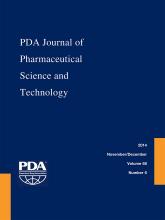Abstract
Applications of next-generation sequencing (NGS) technologies require availability and access to an information technology (IT) infrastructure and bioinformatics tools for large amounts of data storage and analyses. The U.S. Food and Drug Administration (FDA) anticipates that the use of NGS data to support regulatory submissions will continue to increase as the scientific and clinical communities become more familiar with the technologies and identify more ways to apply these advanced methods to support development and evaluation of new biomedical products. FDA laboratories are conducting research on different NGS platforms and developing the IT infrastructure and bioinformatics tools needed to enable regulatory evaluation of the technologies and the data sponsors will submit. A High-performance Integrated Virtual Environment, or HIVE, has been launched, and development and refinement continues as a collaborative effort between the FDA and George Washington University to provide the tools to support these needs. The use of a highly parallelized environment facilitated by use of distributed cloud storage and computation has resulted in a platform that is both rapid and responsive to changing scientific needs. The FDA plans to further develop in-house capacity in this area, while also supporting engagement by the external community, by sponsoring an open, public workshop to discuss NGS technologies and data formats standardization, and to promote the adoption of interoperability protocols in September 2014.
LAY ABSTRACT: Next-generation sequencing (NGS) technologies are enabling breakthroughs in how the biomedical community is developing and evaluating medical products. One example is the potential application of this method to the detection and identification of microbial contaminants in biologic products. In order for the U.S. Food and Drug Administration (FDA) to be able to evaluate the utility of this technology, we need to have the information technology infrastructure and bioinformatics tools to be able to store and analyze large amounts of data. To address this need, we have developed the High-performance Integrated Virtual Environment, or HIVE. HIVE uses a combination of distributed cloud storage and distributed cloud computations to provide a platform that is both rapid and responsive to support the growing and increasingly diverse scientific and regulatory needs of FDA scientists in their evaluation of NGS in research and ultimately for evaluation of NGS data in regulatory submissions.
Footnotes
The authors declare that they have no competing interests.
CONFERENCE PROCEEDING: Proceedings of the PDA/FDA Advanced Technologies for Virus Detection in the Evaluation of Biologicals Conference: Applications and Challenges Workshop in Bethesda, MD, USA; November 13-14, 2013
Guest Editors: Arifa S. Khan (Rockville, MD), Dominick Vacante (Malvern, PA)
- © PDA, Inc. 2014
PDA members receive access to all articles published in the current year and previous volume year. Institutional subscribers received access to all content. Log in below to receive access to this article if you are either of these.
If you are neither or you are a PDA member trying to access an article outside of your membership license, then you must purchase access to this article (below). If you do not have a username or password for JPST, you will be required to create an account prior to purchasing.
Full issue PDFs are for PDA members only.
Note to pda.org users
The PDA and PDA bookstore websites (www.pda.org and www.pda.org/bookstore) are separate websites from the PDA JPST website. When you first join PDA, your initial UserID and Password are sent to HighWirePress to create your PDA JPST account. Subsequent UserrID and Password changes required at the PDA websites will not pass on to PDA JPST and vice versa. If you forget your PDA JPST UserID and/or Password, you can request help to retrieve UserID and reset Password below.






